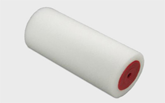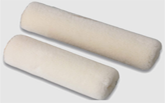Do you know more about roller cover?
Jan. 20, 2017Roller covers are made from a range of materials that have different 'nap' lengths; the type and nap size you need depends on your project. Choose a roller cover that won't leave lint or roller marks behind; don't even bother with the foam rollers--they're fine for testing paint colors, but on large surfaces they just create thousands of tiny air bubbles in the paint film that leave behind a 'cratered' finish.

Good roller covers have moisture-resistant plastic or phenolic cores that won't absorb water and lose their shape. They're also made with solvent-resistant glues, so that the fabric nap will stay bonded to the core instead of ending up on the wall (shed resistance should be listed on the label of any good sleeve). Avoid roller covers with untreated cardboard cores, the kind sold in those bulk packs, they will absorb paint, get soft, and lose their shape in no time.
If you're painting smooth new drywall or slab doors with high sheen paint, choose a roller cover with a short 1/4-inch or 3/16-inch nap. A short nap roller cover won't hold a lot of paint, but it will leave a very smooth finish with very little stipple, or texturing. For matte and eggshell paints on smooth, previously painted drywall, use 3/8-inch or 5/16-inch nap sleeves. The slightly longer nap will hold more paint with minimal roller stipple. A quality roller cover with a 3/8-inch nap is versatile enough to work with most paints on most surfaces.














